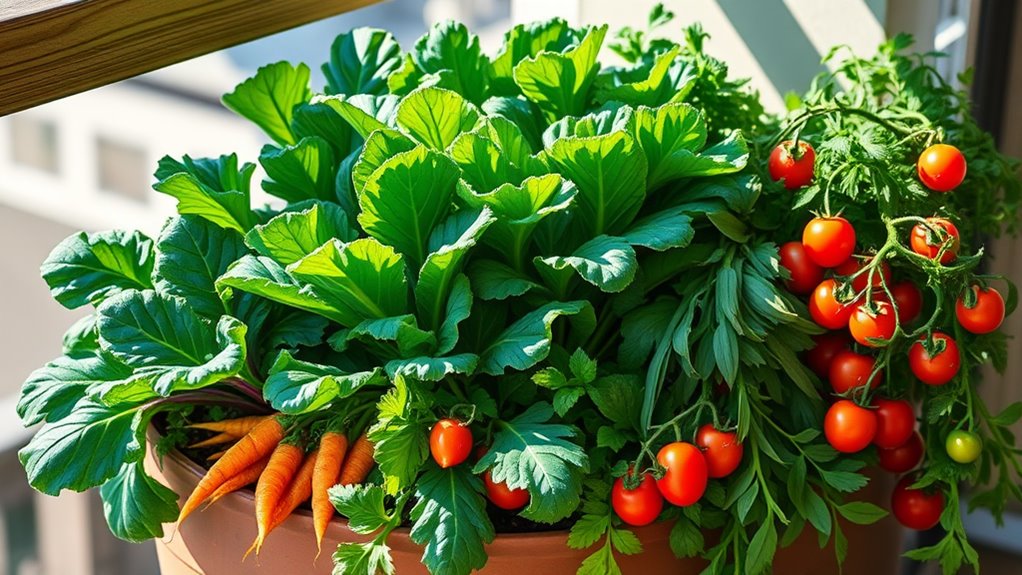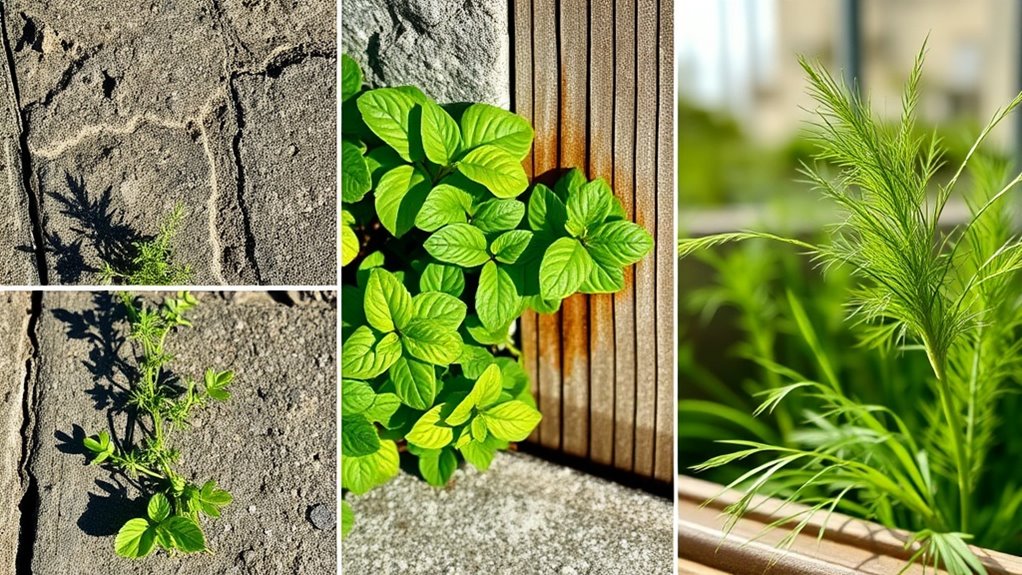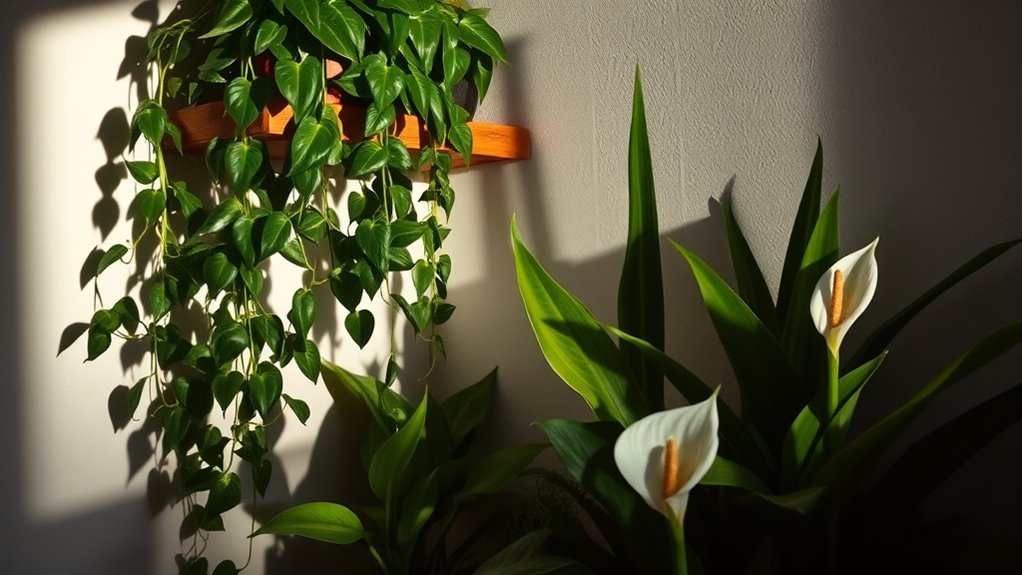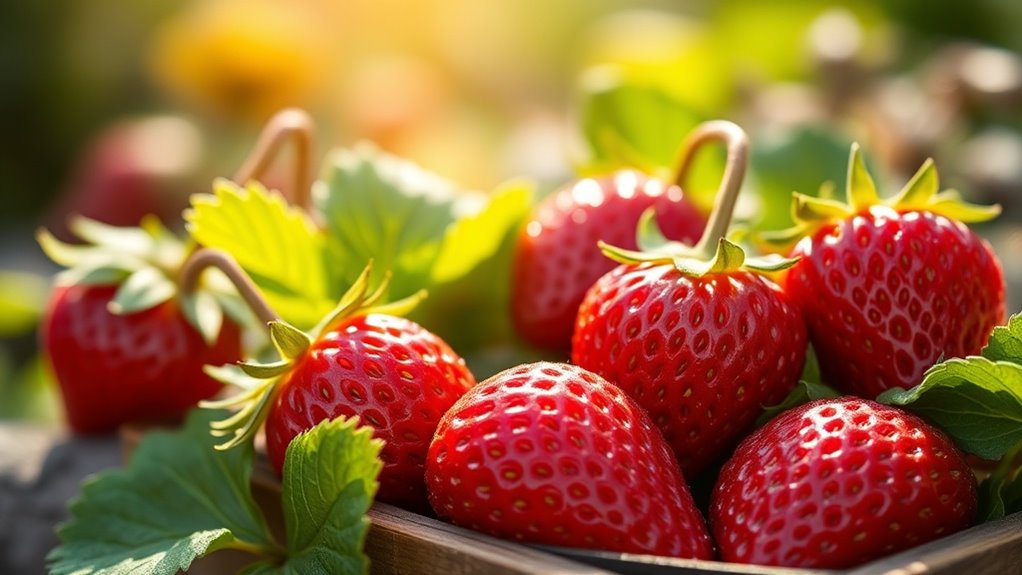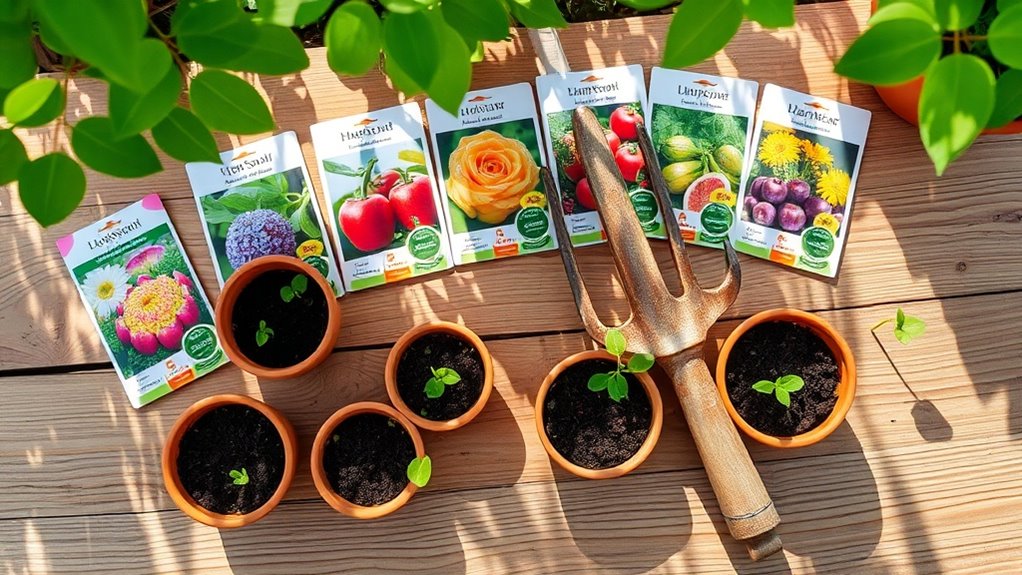Don’t Have a Garden. Try These Container-Friendly Veggies
You can grow vegetables in containers, you can cultivate fresh herbs on your balcony, and you can enjoy homegrown produce without a garden. Container gardening offers a practical solution for urban dwellers or those with limited space. With the right plants and care, you can transform any small area into a productive green space. Curious about which veggies thrive in pots and how to get started? Let’s explore the essentials of container-friendly gardening together.
Key Takeaways
- Cherry tomatoes and peppers thrive in containers, offering a rewarding harvest in limited spaces.
- Leafy greens like spinach and lettuce grow quickly and are perfect for small pots.
- Herbs such as basil and parsley flourish in smaller containers, enhancing your meals with fresh flavors.
- Radishes mature rapidly, making them an ideal low-maintenance choice for container gardening.
- Use pots with proper drainage and high-quality soil to support healthy growth in your container garden.
Best Vegetables for Container Gardening
When you’re considering container gardening, choosing the right vegetables is crucial for success.
Opt for container vegetables like cherry tomatoes, which thrive in smaller spaces and produce sweet fruits.
Leafy greens like spinach and lettuce grow quickly, providing fresh salads throughout the season.
Radishes are another great choice; they sprout fast and require minimal care.
Don’t forget herbs like basil and parsley, which add flavor to your dishes and flourish in pots.
Peppers, whether hot or sweet, also adapt well to container life. Additionally, many of these vegetables can be grown successfully in small spaces, making them perfect for urban gardening enthusiasts.
Ideal Container Sizes for Different Veggies
When you’re choosing containers for your veggies, size really matters.
Small containers work best for herbs, providing just enough space for their roots to thrive.
For leafy greens, opt for medium-sized pots, while larger containers are essential for robust plants like tomatoes, allowing them to grow strong and healthy. Additionally, best crops for container gardening include peppers and cucumbers, which also require ample space to flourish.
Small Containers for Herbs
Choosing the right container for your herbs can make all the difference in their growth and flavor.
Opt for small pots, ideally 6 to 8 inches in diameter, to provide adequate drainage and prevent overwatering.
Herbs like basil, mint, and parsley thrive in these cozy spaces, where their roots can establish without becoming root-bound.
Ensure your containers have drainage holes to keep soil moisture balanced.
You can also mix herbs in larger containers, but be mindful of their growth habits.
With the right size and care, you’ll enjoy fresh, aromatic herbs straight from your balcony or kitchen.
Happy gardening!
Medium Sizes for Greens
After nurturing your herbs in small containers, it’s time to expand your horizons with medium-sized pots for growing greens.
Ideal containers range from 5 to 10 gallons, providing ample space for root development.
Leafy greens like lettuce, kale, and spinach thrive in these pots, allowing for multiple plants per container.
Make sure to use well-draining soil and place your pots in a spot that gets at least six hours of sunlight daily.
Regular watering is crucial; keep the soil consistently moist but not soggy.
With the right care, you’ll enjoy a bountiful harvest of fresh, homegrown greens.
Large Options for Tomatoes
Tomatoes are a garden favorite, and they thrive in larger containers that offer plenty of room for their expansive root systems.
To ensure your tomato plants flourish, consider these ideal container sizes:
- 5 Gallon Bucket – Perfect for dwarf or determinate varieties, allowing roots to spread comfortably.
- 10-15 Gallon Container – Great for standard varieties, providing ample space for growth and moisture retention.
- Fabric Pots – Breathable and lightweight, these are excellent for larger plants and promote healthy root systems.
- Whiskey Barrels – Stylish and spacious, they can accommodate multiple plants, enhancing your garden aesthetics.
Choose wisely and enjoy a bountiful harvest!
Soil and Nutrient Requirements
To grow vibrant container-friendly veggies, you need to focus on soil composition and nutrient balance.
A well-draining mix enriched with organic matter will provide essential nutrients for your plants. Additionally, incorporating essential soil ingredients can significantly improve the nutrient content and overall health of your container garden. Plus, understanding how to maintain that balance can make all the difference in your garden’s success.
Soil Composition Essentials
A well-balanced soil mix is crucial for growing container-friendly veggies, as it directly influences their health and productivity.
To achieve optimal growth, ensure you include the following essentials:
- Potting Soil: Use a high-quality, well-draining potting mix designed for containers.
- Perlite or Vermiculite: These additives improve aeration and drainage.
- Organic Matter: Incorporate compost or aged manure for nutrients and beneficial microbes.
- pH Balance: Test your soil’s pH, aiming for a range of 6.0 to 7.0 for most vegetables.
With the right soil composition, your container garden will thrive, yielding healthy, delicious produce.
Nutrient Balance Tips
After establishing a solid soil foundation, focusing on nutrient balance ensures your container-friendly veggies flourish. Regularly check your plants’ nutrient needs and make adjustments as necessary. Use organic fertilizers like compost or fish emulsion to provide essential nutrients.
| Nutrient | Importance | Sources |
|---|---|---|
| Nitrogen | Promotes leafy growth | Blood meal, fish emulsion |
| Phosphorus | Enhances root development | Bone meal, rock phosphate |
| Potassium | Improves fruit quality | Kelp meal, wood ash |
| Calcium | Strengthens cell walls | Gypsum, crushed eggshells |
| Magnesium | Aids photosynthesis | Epsom salt, compost |
Keep your veggies thriving!
Watering and Maintenance Tips
Maintaining healthy container-friendly veggies requires a keen eye on their watering needs and overall care.
Here are some practical tips to keep your plants thriving:
- Check moisture: Stick your finger an inch into the soil; if it’s dry, it’s time to water.
- Water deeply: Ensure the water reaches the roots by saturating the entire container until it drains from the bottom.
- Use mulch: Layering mulch on top helps retain moisture and suppress weeds.
- Observe your plants: Yellowing leaves may signal overwatering, while drooping leaves indicate they need more water. Additionally, it’s important to consider ideal watering schedules, as different plants may have varying requirements based on environmental factors.
Stay attentive, and your container veggies will flourish!
Seasonal Considerations for Container Veggies
Understanding seasonal considerations is crucial for successfully growing container veggies. Each season brings unique challenges and opportunities for your plants. For instance, you’ll want to choose heat-tolerant varieties in the summer, while cooler months require frost-resistant options. Additionally, incorporating salad bowl gardening techniques can help maximize your yield and variety in a limited space.
| Season | Ideal Veggies | Container Size |
|---|---|---|
| Spring | Lettuce, Radishes | 5-10 gallons |
| Summer | Tomatoes, Peppers | 10-15 gallons |
| Fall | Kale, Spinach | 5-10 gallons |
| Winter | Herbs, Microgreens | 2-5 gallons |
Harvesting and Enjoying Your Container Crops
When your container crops reach maturity, it’s time to embrace the rewarding experience of harvesting and enjoying your fresh produce.
Here’s how to make the most of your bounty:
- Pick at the Right Time: Harvest veggies in the morning for maximum freshness and flavor.
- Use Proper Tools: A sharp knife or scissors helps prevent damage to the plant.
- Store Wisely: Keep your harvest in a cool, dry place to maintain freshness.
- Get Creative: Experiment with recipes to highlight your homegrown flavors, whether in salads, soups, or stir-fries. Additionally, consider incorporating cut and come again greens into your container garden for continuous harvests throughout the season.
Enjoy the fruits of your labor!

